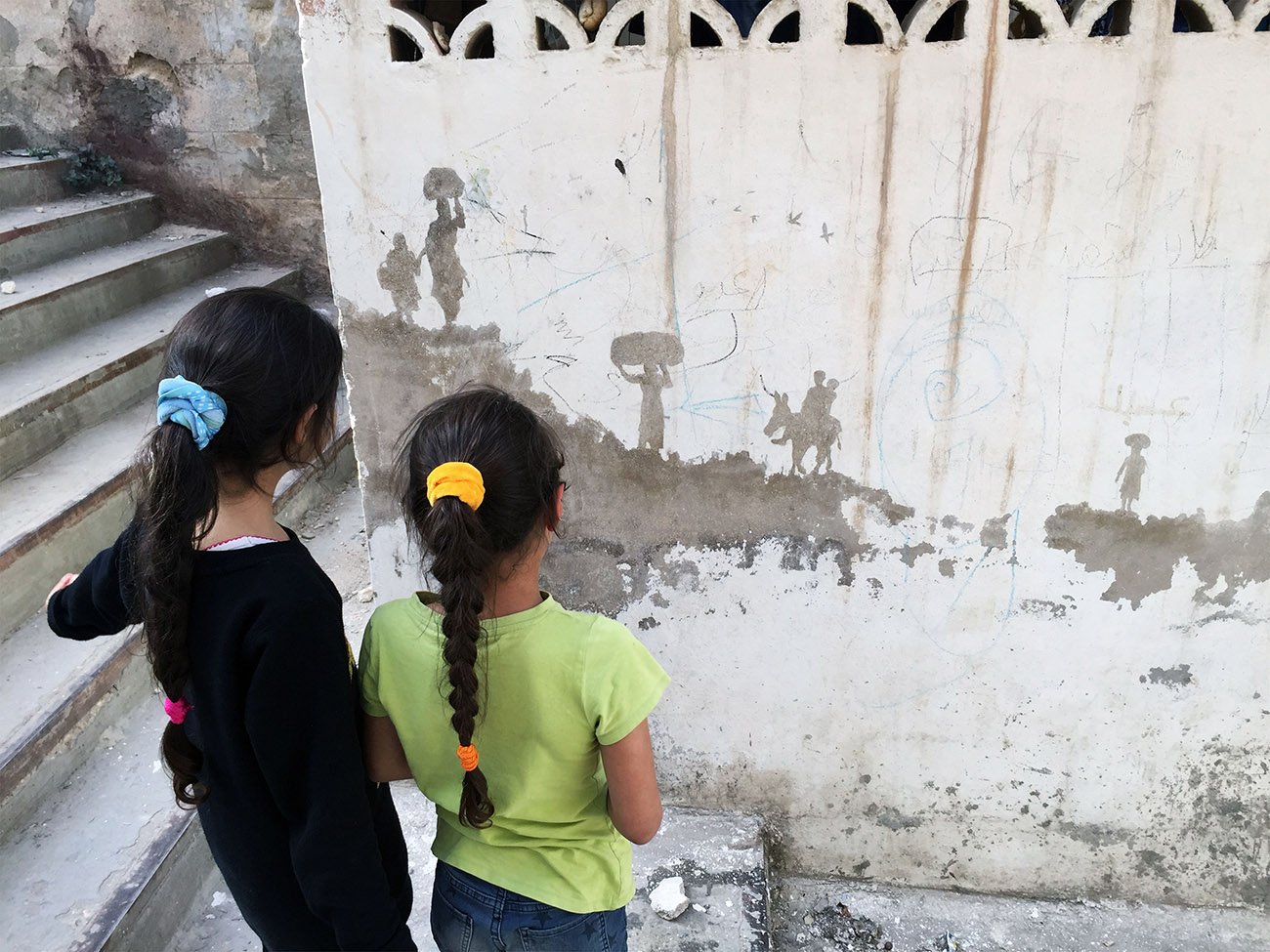Barcelona-based artist Pejac is known for his artworks that skillfully reinvent the public space, often speaking on sensitive social and environmental issues. Recently, in the middle of working towards his next solo show in London, Pejac took a trip to a refugee camp in Amman, Jordan to create his latest public intervention. The series has captured the attention of the world for its subtle power.
Al-Hussein is a refugee camp that was established in 1948 as a result of the Arab/Israeli war to provide shelter for those who fled or were expelled during the Palestinian Exodus. It’s one of 10 similar camps that remain in Jordan today, a country that is home to over 2 million Palestinian refugees. Using nothing but small sharp tools, Pejac created a series of interventions on the walls throughout Al-Hussein.
”With these four small interventions I am trying to tell a minimalistic story about the Palestinian refugees in Al-Hussein. By removing small areas of the “skin” of the houses I want to transform the paint chipping, produced by the passage of time, into evocative landscapes and transmit the pride of its inhabitants through the walls.” – Pejac
Combined with the natural erosion of the walls, Pejac carved the facades to depict the people of Al-Hussein, past and present, in various situations relating to life at the camp. From playful moments before the conflict, to images of bulldozers that constantly change their surroundings, and a poignant piece showing the shrinking map of Palestine, the carvings draw attention to the realities of life for a Palestinian refugee. Below are images of the 4 interventions; the project was made with the support of the Spanish embassy in Amman.
Throne
Kite


Migration

Palestine

Check out more of Pejac’s work at www.pejac.es




